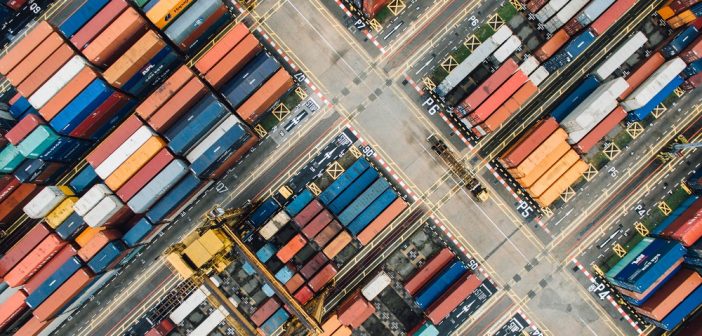This is the first article in a three-part series on how to reduce uncertainty in the supply chain for lower costs. This article deals with reducing uncertainty downstream – i.e., in relations with customers (and their customers).
There are several ways to define uncertainty. I like two angles, which are not that different:
- Supply chain uncertainty refers to the decision-making process in the supply chain in which the decision maker does not know exactly what to decide due to lack of transparency of the supply chain and the impact of possible actions.
- Supply chain uncertainty refers to the change of the balance and profitability of the supply chain caused by potential and unpredictable events, which requires a response to re-establish the balance. An event can be an unexpected order, late delivery from a supplier or a breakdown of critical production equipment.
As you will see in the following three examples, the data for analytics is available. It is most often already available within the company and may just need preparation, while other data is available outside the company.
Uncertainty: What am I going to deliver in the future?
The result of demand uncertainty is increased cost, most commonly in the form of excess inventory, excess capacity in production, or the use of faster and more expensive transportation of goods. The company typically tries to create a supply chain balance where inventory, transportation and supply chain/capacity costs are minimised, but still meet the requested customer service level (lead time and precision).
Demand is difficult to forecast due to a number of reasons, including the influence of causal factors, events or lumpy demand. Some of these may be known, but there can also be unforeseeable events that change demand for your products completely.
I have written several posts on how to work with the forecast to increase accuracy (see The Market Driven Journey on the use of causal forecasting, Forecasting Tender Demand on forecasting lumpy demand coming from known tenders, or view this short video on Achieving Supply Chain Utopia).
The bottom line is that analytics can play a central role in reducing demand uncertainty, as it can help answer some of the pivotal questions around the forecast:
- What is the effect of my promotions?
- Which of the tenders are likely to realise as orders?
- How much will my new products sell?
These questions can be answered using proven analytical methods such as demand sensing and shaping, predictive analytics and clustering. In most cases the answer will be more reliable than by just using gut feeling or even other, more advanced, judgmental forecasting techniques.
The data for reducing demand uncertainty is typically available – often in different IT systems (ERP, CRM, spreadsheets) – but may also be collected from outside sources, e.g., syndicated scanner data or macro-economic figures.
Uncertainty: How much will my customer return?
The returns loop is often regarded a more difficult flow to master efficiently, and it often involves additional work tasks adding cost. For this reason, anticipating the number of products returned can be of great interest – especially in the CPG/retail area, where up to 60 percent of the order lines are returned. Returns typically appear either due to faulty products or due to customer expectations of price/quality – or in fashion retail, wrong size of fit.
This is a variant of demand forecasting, but can involve several other causal factors, such as claims percentage, historical returns percentage or others.
Another approach is to use predictive models to determine the likelihood of a return for each customer order. Using predictive analytics, you may score the likelihood of each sales order being returned. This may also lead to differentiated returns policies per customer or customer group.
Uncertainty: What kind of quality problems will my customers experience?
This is a big question for many companies. Despite doing everything possible to make sure that the products sent out live up to the quality requirements, some products will fail after some time. For a company, quality issues can be disastrous – and the stories are many. Do a Google search on product recalls and you will find several examples of quality issues that have had serious impacts on the manufacturer – financial and reputational.
Service departments across the world are trying to reduce warranty costs by identifying the next (big) problem as soon as possible, digging into claims or service reports to find the needle in the haystack. Applying analytics to this search will improve the probability of identifying and preventing quality issues.
If we are looking to the downstream part of quality analytics, there are three very different types of data sources that may be relevant and available:
- Claims: May be the main source of data for dealing with field quality. These often contain failure codes and consist of unstructured data.
- IoT: Some companies collect data from the products at the customer site – e.g., if there is an SLA on product uptime. The stream of sensor data can tell – in near-real time – if a product needs to be serviced.
- Social media: Data from social media can support claims data – especially for low-cost products.
Dealing with such different types of data naturally requires different types of analytics. Both claims and social data are unstructured data and require text analytics, whereas streaming data provides other possibilities – e.g., for analytics at the edge.
Sum up
The bottom line is that the cost associated with uncertainty downstream in the supply chain can be reduced by applying analytics to the already available data. The three cases above also show that analytics can significantly change the profitability of the organisation.
The table below sums up the three cases, outlining data, analytics methods and value gained.
| Uncertainty | Data | Analytics | Value |
| What am I going to sell in the future? | Historical sales, independent variables (dema nd drivers). | Forecasting, predictive analytics for tender demand. | High forecast accuracy is key to bringing down inventory, transportation and supply chain cost without hurting customer service. Some see an increase of 5-10 percent in accuracy. |
| How much will my customer return? | Historical sales, historical returns, customer data | Forecasting and predictive analytics. | Planning ahead, differentiated returns policies. |
| What kind of quality problems will my customers experience? | Claims, IoT, social media | Text analytics, predictive analytics, edge analytics. | Warranty costs, brand reputation. Some see a 10-15 percent reduction in warranty costs. |
Discover more insights on SAS Industrial IoT Information Hub



2 Comments
I am interested to do my Ph.D in the field of uncertain supply chains. I have no contacts in industries. Can u please suggest how should I start and proceed my work.
Hi Rajkumar - thank you for your comment and your interest in managing Supply Chain uncertainty - something I believe will be grow in importance in the coming years.
To your question, a PhD in this area should be done in close collaboration with 1-3 companies with complex supply chains. I think you should investigate a few relevant companies and identify some of their uncertainties. Use this investigation to narrow scope and link up with relevant companies. There's so much information to be found online.